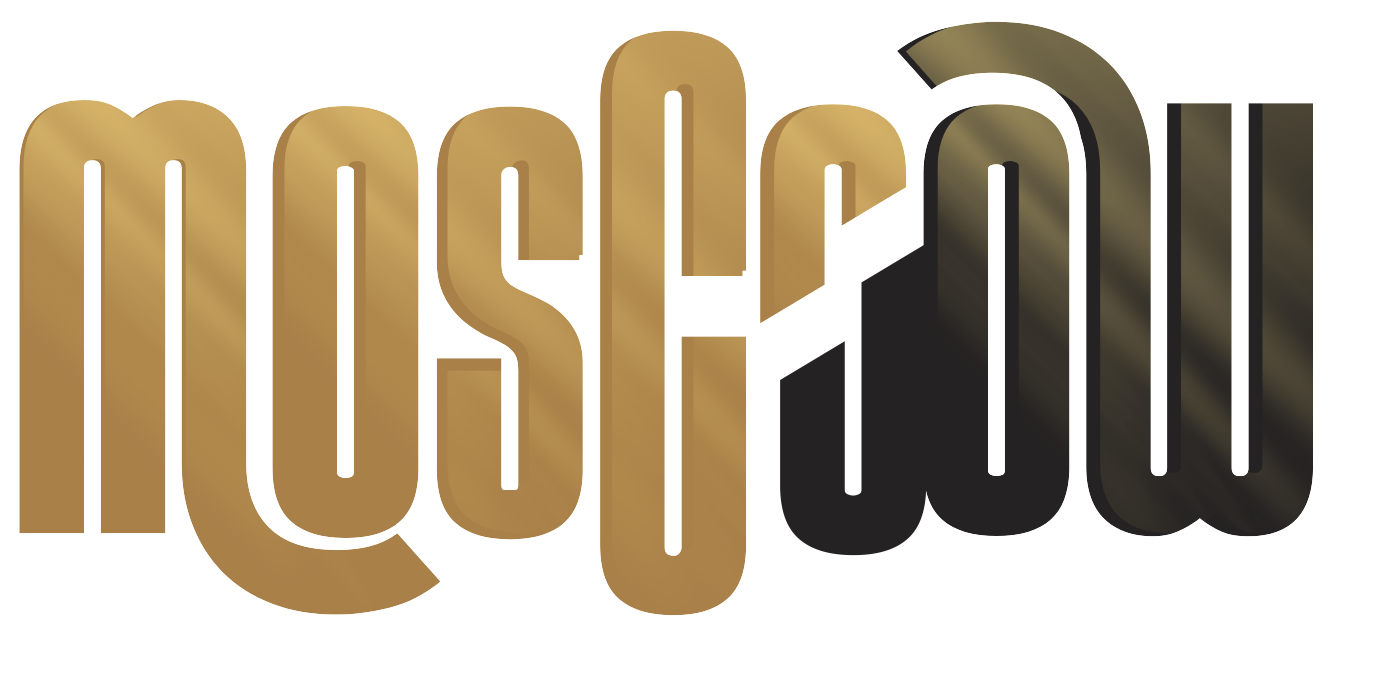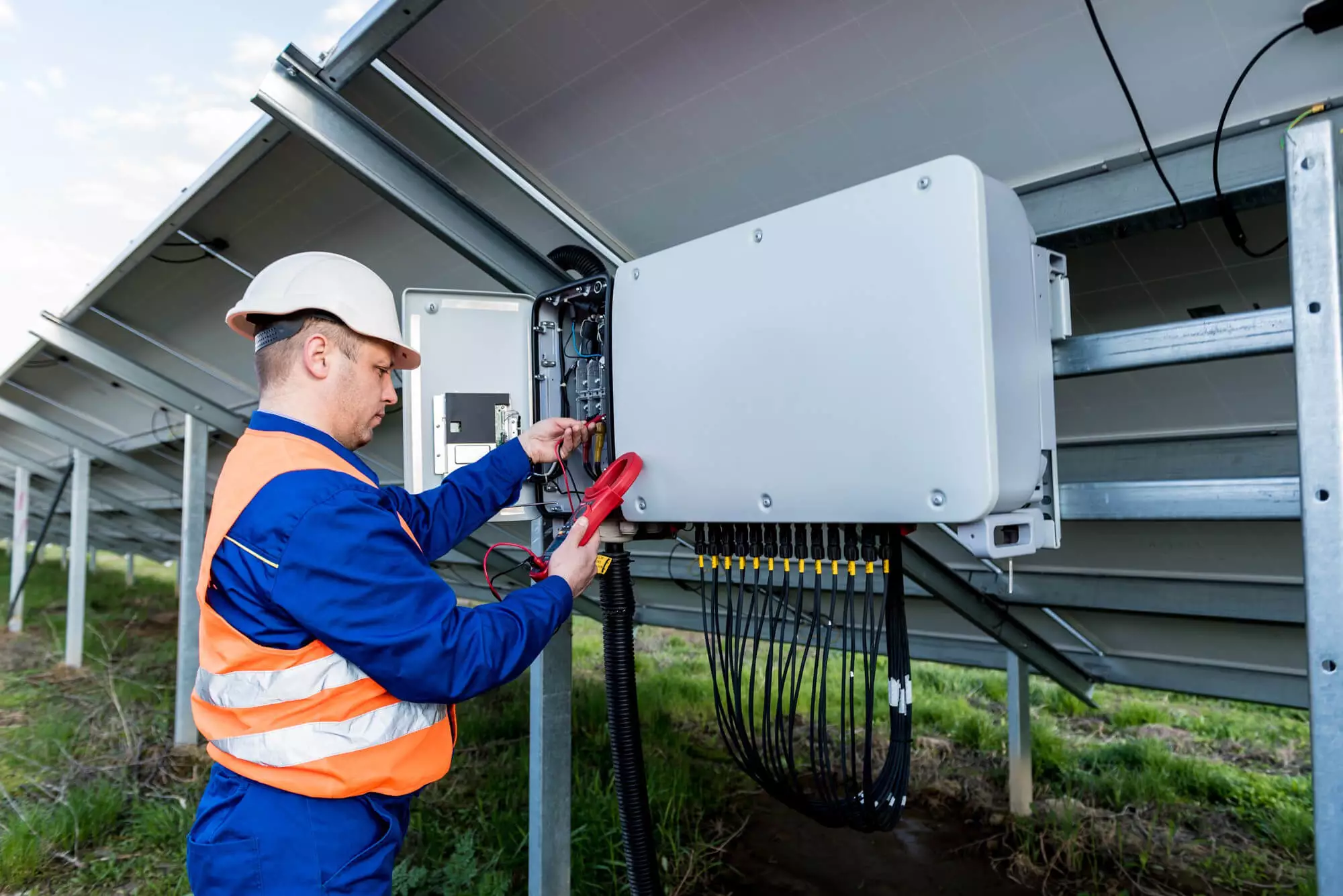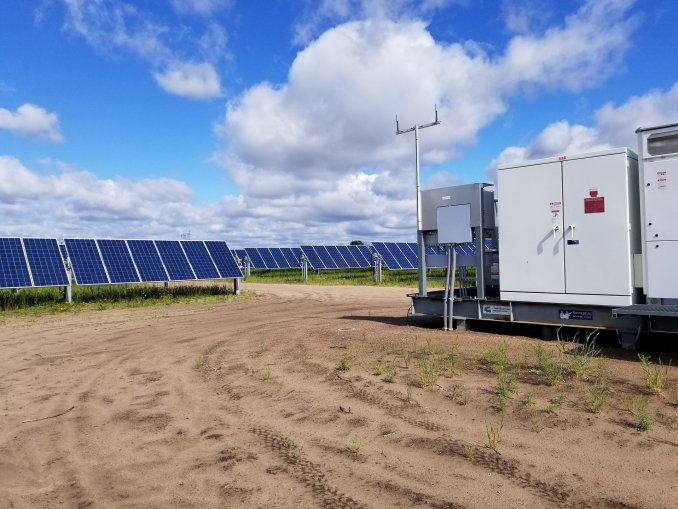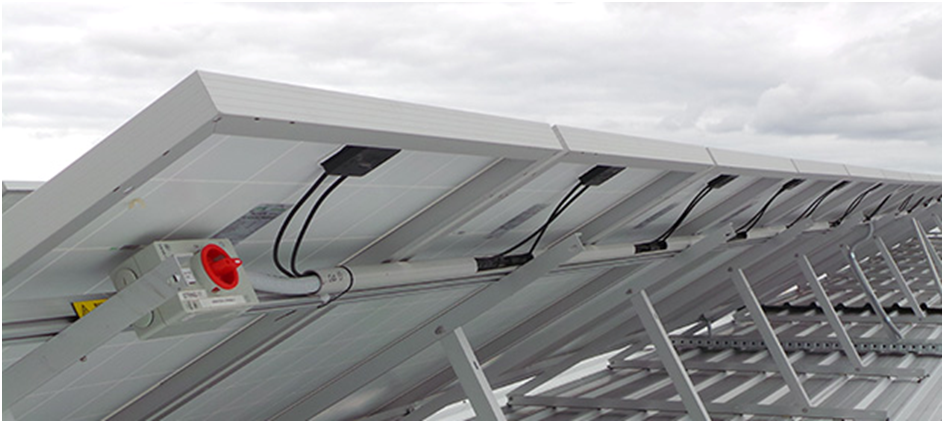A Best Solar Inverters 2023 changes direct current (DC) electricity into alternating current (AC). Solar inverters are important system components because solar panels are designed to convert sunlight into DC energy. Still, your home requires AC to power all of your lighting and appliances. The solar inverter converts the DC electricity produced by the solar panels into 240V AC electricity, which can then be used by the property/household, exported to the grid, or stored in a solar battery storage system.
The title for best grid-tie solar inverter has never been closer as many of the top manufacturers release advanced new models with clever online monitoring and smart home energy management features. The hype around home battery systems or hybrid systems is also growing, but it is early days for batteries, and the majority of solar installations still require a dedicated solar inverter. Even the renowned Tesla Powerwall with its inbuilt inverter requires an additional solar inverter to work with a rooftop solar array.
The major benefit of a more extensive solar PV system is that it will be simple to add a solar battery, utilize your solar inverter’s capability to its fullest extent, and generate more power during the day so that you won’t be as dependent on grid electricity. You can start making the most of your solar PV system by installing a solar battery, like the Tesla Powerwall 2.
Many solar inverter products also have a Wi-Fi monitor, which gives you real-time data about the solar power generated. It’s even better when you have a powerful solar panel that can measure the energy used to produce electricity.
Solar Inverter functions & problems
The solar inverter is the most sophisticated part of any grid-tie solar system, and unfortunately, it’s also the part most likely to have issues. This is not surprising considering inverters are usually located outside in harsh weather conditions, including rain, humidity, and extreme heat, all while generating thousands of watts of power for up to 10 hours a day. This is why it’s important to use a quality inverter and mount it in a sheltered location if possible. Learn more about solar system fault finding.
Solar inverters are an integral part of every solar power system.
They perform two key functions:
DC to AC conversion
All solar panels generate Direct Current (DC) a solar inverter is required to convert this into Alternating Current (AC), the form of electricity usable by your home.
MPP tracking
The operating conditions of solar panels – sunlight intensity and panel temperature – fluctuate throughout the day. This means that the possible solar panel voltage and current are always changing as well. In a process called Maximum Power Point (MPP) tracking, the solar inverter dynamically selects the exact combination of the two that will produce the most power.
Types of solar inverters
There are many different inverters available for solar and energy storage systems, but here we list the four most common types used for rooftop solar.
String Solar Inverters
This review focuses on common ‘string’ solar inverters, the most popular type of solar inverter. These inverters are connected to a string of solar panels linked together in series. String inverters are the most common type of inverter used in the UK, Europe, Australia, & Asia, and are growing in popularity in the US, where micro inverters are very popular.
Hybrid Inverters
Hybrid inverters sometimes referred to as battery-ready inverters, are similar to string solar inverters but enable the direct connection of a battery storage system to allow greater self-sufficiency using solar. Most hybrid inverters also provide a basic level of backup power in the event of a blackout but are generally not designed for continuous off-grid use. While more expensive, hybrid inverters are becoming more cost-competitive against solar inverters as hybrid inverter technology advances and batteries become cheaper and more appealing. For more information, see our detailed hybrid and off-grid inverter review.
Off-grid Inverters
Off-grid or stand-alone Solar inverters generally require much more powerful battery inverters with inbuilt chargers, which can be set up as either AC or DC-coupled solar systems. Modern, flexible off-grid inverter chargers, also known as multi-mode inverters, can also be used to create advanced hybrid grid-connected systems. See the best off-grid solar systems review for more information.
Small-scale and DIY off-grid systems use simple MPPT solar charge controllers, also known as solar regulators. These are not inverters but DC solar battery chargers connected between the solar panel/s and battery to regulate the battery charging process and ensure the battery is charged correctly, or more importantly, not over-charged.
Micro Inverters
Micro inverters, also known as micros, are very small Solar inverters attached directly to individual solar panels. Since each micro inverter and panel operate independently, they are a great option for complex roof layouts and locations with shading. Despite the slightly higher cost, micros are very popular in North America due to Enphase’s strong presence. They are becoming more popular worldwide due to the several advantages they offer over string solar inverters.
Solar PV systems and required Solar inverters
- Grid-tied inverters are intended for grid-tied solar systems, the most common system type. When necessary, they import utility electricity from the grid and maintain a two-way interaction with it, exporting solar energy to it.
- Hybrid inverters function with hybrid solar systems, also known as multi-mode inverters, battery-ready inverters, or solar-plus-storage systems. They can charge and draw electricity from a battery arrangement and have the same functionality as a grid-tie inverter.
- Off-grid inverters are utilized in off-grid solar systems, also known as entirely independent solar power systems, to provide backup power during grid outages. An off-grid inverter cannot be linked to the grid and must have a battery backup to operate.
Where should an inverter be located?
Almost all solar inverters are fully weather-rated and can be safely installed outside. However, like any electrical equipment, solar inverters should be installed in a protected or shaded location to avoid extreme weather and large variations in temperature, which can reduce performance and lifespan. The life of a solar inverter will be significantly increased by locating it inside a garage, under a carport, and out of direct sunlight. Most importantly, locations exposed to the hot afternoon sun should always be avoided. If direct sunlight cannot be avoided, a protective sun cover will help prolong the life of the inverter.
Solar panels can also develop problems or suffer from excessive degradation over time which can result in poor performance. However, unlike a faulty inverter, degradation of solar panels will generally not result in a complete system shutdown, that being said, we do recommend using only reputable solar panel brands from a reliable installer. With this in mind, it is worthwhile paying the additional cost for a quality inverter brand and one which has been in good business standing for 5+ years and with extended warranties if available.
Solar Inverter Technologies
String Solar inverters
The most common type of solar inverter used in residential solar panel systems is the string inverter because each installation typically calls for one. Several solar panel strings connect to a single inverter. Then, for domestic usage, it transforms DC into AC.
Micro Inverters
Each solar panel needs a small inverter called a microinverter to maximize its power at the module level. Even with partial shading, each solar panel still generates more electricity. Each panel’s voltage output is optimized using a microinverter to maximize output. Since each micro-inverter is connected to another, the system keeps converting DC to AC even if one microinverters fails.
Central inverters
Although they are larger and can sustain more than one string instead of just one, they are closely similar to string inverters.
Contrary to string inverters, the strings inside are united into a bix, with the DC power moving towards the central inverter box, where it is converted to AC electricity. These primarily serve business rather than domestic purposes. These are typical of commercial facilities and utility-scale solar farms.
Battery based Solar inverters
A battery bank is necessary for battery inverters to operate. It transforms the battery bank’s DC electricity into AC energy. They can deliver power even during a power outage like hybrid inverters. Battery inverters have the drawback of interfering with the phone, radio, and television reception due to their buzzing noise. Installing sine waves will help you reduce interference.
Power optimizer
Power optimizers can be installed in systems with strings of panels and a string inverter even though they are not inverters. Like microinverters, they ensure that the output of the remaining solar panels in the string won’t be impacted if one of the panels is shaded, dirty, or fails in some other manner.
Which one is the Best Solar Inverters 2023?
Micro Inverters vs Central Inverters
A solar inverter converts DC power captured by your solar panels into AC power that can be used in your home. The two types of inverters used in residential solar are micro inverters and central inverters with power optimizers.
While there are several excellent solar panels on the market, there are only two inverter brands that have the features and benefits needed for dependable solar. The best micro-inverters are made by Enphase, and the best central string inverters are made by SolarEdge. But which is better?
Benefits of Micro Solar inverters
Microinverters are small inverters mounted under each panel, and they convert your DC power to AC right on your roof. A major advantage of micro-inverters is that if a panel is shaded or stops producing, the rest of your solar continues to produce power. Another major benefit of microinverters is their flexibility of design including the ability to add more panels later without having to upsize a central inverter. You also get panel-level monitoring, giving you a detailed look at your system’s performance. Warranty periods for micro inverters are typically longer which is a reflection of their expected lifespan. Enphase’s IQ7 micro inverters have a 25-year warranty.
The drawback of Micro Inverters: Clipping
The biggest disadvantage of micro inverters is clipping. Clipping is when the panel output (wattage) is higher than the microinverter’s capacity to convert energy. For example, if you have a 100-watt lightbulb in a lamp that can only output 60 watts of light, 40 watts of light would be clipped. Similarly, if you have a 370-watt solar panel with a microinverter that can only handle 290 watts, 80 watts of power will be lost during peak hours of the day.
Keeping the range small between inverter capacity and panel output is critical. Don’t waste money on high-wattage panels that are coupled with low-output micros. The system price is a good way to tell because higher-capacity microinverters are more expensive. Insist on seeing inverter output data sheets.
Central Inverter with Power Optimizers
Central inverters convert the DC power from your panels to AC power in a central unit mounted on a wall. Hybrid inverters like SolarEdge have power optimizers mounted on each panel to mitigate the effects of shading on an array. Central string inverters without power optimizers are like the old style of Christmas lights: when one panel goes down, all panels in the string go down. Power optimizers stop that from happening, and enable panel-level monitoring
However, if the central inverter goes down, you lose all the power from your panels connected to it. This single point of failure increases the chance that the entire solar system goes down when a failure occurs. While power optimizers reduce the effects of shading and underperforming panels on each string, they don’t help if the central inverter goes down.
Benefit: Less Clipping, Higher Efficiency
A major benefit of a string inverter is reducing or eliminating clipping if the inverter is sized properly. Many installers, however, tend to undersize central inverters. So be sure to check the inverter’s maximum capacity against your system output capacity. Another benefit of central inverters like the SolarEdge HD Wave is that it has a higher efficiency rating than microinverters. This means there’s a higher conversion rate of DC power into AC power.
Drawbacks Of Central Solar inverters
The big drawback with central inverters is the risk of losing all of your production if the inverter goes down. Because it is a single point of failure. Another major drawback is the inverter has only a 10 – 12 year warranty. But you can extend it up to 25, which we highly recommend. Many installers offer an extended warranty, so be sure to ask. Optimizers have a 25-year warranty.
Do I Need Consumption Monitoring?
Consumption monitoring shows your power usage from both solar power and the grid. It requires a special connector that doesn’t fit in all electrical panels. There’s usually an additional cost for it, but it’s well worth it. With consumption monitoring, you don’t have to do the math between your solar monitoring and your utility bill. If your installer offers it, get it to see your consumption right in the monitoring portal.
Get Consumption Monitoring
Why? Neither your net-metered bill nor your solar monitoring has the complete picture of your energy usage. Most people are confused that their utility bill does not match their solar production on their monitoring reports. This is because the utility company never sees all of your solar production. Only the excess flows into the grid.
Conversely, your solar production monitoring does not show how much power you pulled from the grid without a consumption meter. This is why adding consumption to your solar monitoring provides you with the big picture. So that all the numbers make sense.
Conclusion:
To summarize, the best inverter choice is a micro inverter system. While the best central inverter is SolarEdge, Enphase is the best micro inverter and the best overall inverter for solar. Due to the single-point-of-failure issue of string inverters, Enphase systems are the most reliable choice for homeowners.
If you are choosing a high-power solar panel then you need to read the best inverter for high-power solar panels. Because high-wattage panels may lose power with microinverters. If you pick one of the best solar installers, they will help you make the right choice.




